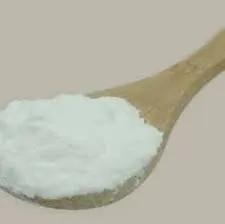Chemicals Used in Wastewater Treatment Plants
Wastewater treatment is an essential process that ensures the safe disposal and reuse of water coming from domestic, industrial, and agricultural sources. A key aspect of this process is the use of various chemicals that facilitate the removal of pollutants, pathogens, and other harmful substances from the wastewater. This article explores the primary chemicals utilized in wastewater treatment plants and their functions.
Coagulants
One of the first steps in wastewater treatment is coagulation, where coagulants are added to aid in the aggregation of suspended particles. Common coagulants include aluminum sulfate (alum) and ferric chloride. These chemicals neutralize the charges on particles, allowing them to clump together into larger aggregates called flocs. The larger size of flocs improves sedimentation, making it easier to separate solids from the liquid.
Flocculants
After coagulation, flocculants are often used to enhance the formation of flocs. Polyacrylamide is a commonly used flocculant that helps to bind the flocs together, improving the efficiency of sedimentation and clarification processes. This step is crucial in removing suspended solids and reducing the turbidity of the treated water.
Disinfectants
Disinfection is a critical part of the wastewater treatment process, particularly for effluents that will be discharged into bodies of water or reused for non-potable purposes. Common disinfectants include chlorine, ozone, and ultraviolet (UV) light. Chlorine is widely used due to its effectiveness in killing bacteria and viruses, while ozone is favored for its ability to break down organic pollutants without leaving harmful residues. UV light is another popular option as it treats water without the addition of chemicals, using high-energy light to deactivate pathogens.
what chemicals are used in wastewater treatment plants

pH Adjusters
Maintaining the appropriate pH level is vital for effective wastewater treatment. Chemicals such as sodium hydroxide (caustic soda) and sulfuric acid are commonly used to adjust the pH of wastewater. A controlled pH is essential for optimizing the performance of coagulants and disinfectants, as well as ensuring compliance with environmental regulations.
Nutrient Removal Chemicals
In many cases, wastewater contains excess nutrients like nitrogen and phosphorus, which can lead to environmental issues such as eutrophication if released untreated into water bodies. To remove these nutrients, chemicals like aluminum sulfate or ferric chloride may be employed. Additionally, other specialized compounds are used in advanced treatment processes, such as biological nutrient removal (BNR) and chemical precipitation.
Odor Control Agents
Wastewater treatment plants often produce unpleasant odors, primarily due to the breakdown of organic matter by bacteria. To mitigate these odors, various chemicals such as sodium hypochlorite and calcium nitrate are used. These agents help to eliminate hydrogen sulfide and other odor-causing compounds, thus ensuring that treatment facilities operate within acceptable odor thresholds.
Conclusion
The use of chemicals in wastewater treatment is crucial for ensuring that effluents are safe for discharge and potential reuse. Coagulants, flocculants, disinfectants, and agents for pH adjustment and nutrient removal all play significant roles in this complex process. By utilizing these chemicals effectively, wastewater treatment plants can protect public health and the environment, ensuring clean water for future generations. As regulations evolve and the focus on sustainability increases, the methods and chemicals used in wastewater treatment are likely to continue developing, aiming for greater efficiency and lower environmental impact.

